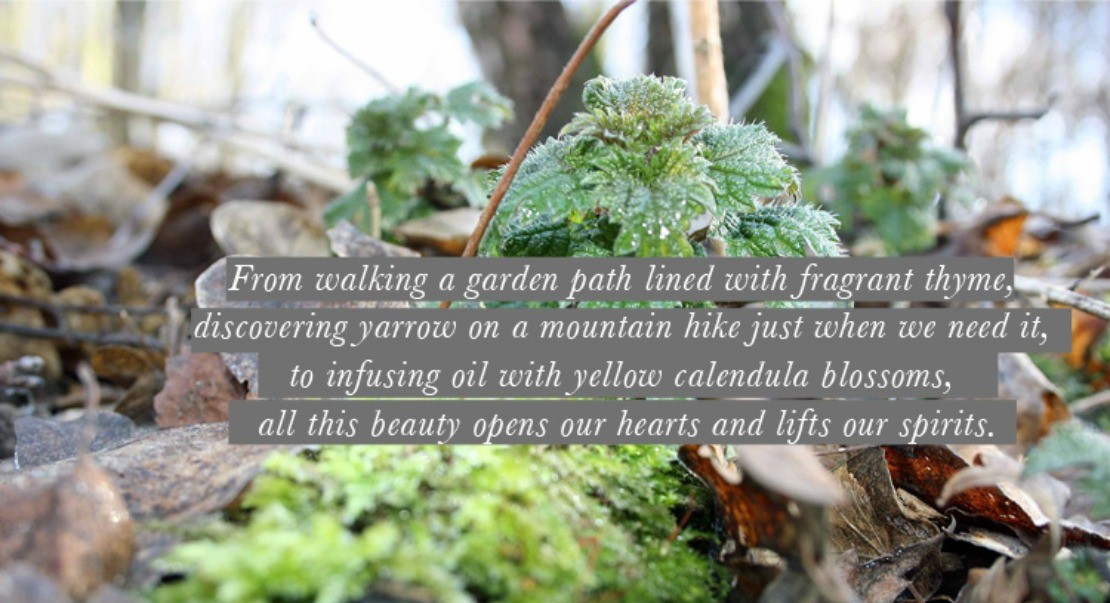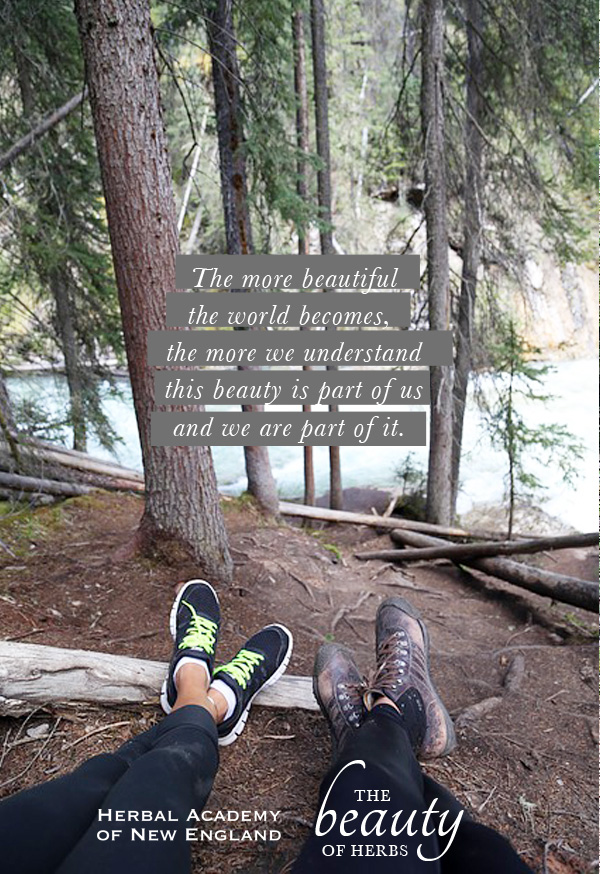
The Beauty of Herbs
The plants we gather from field and forest contain hundreds if not thousands of nutrients and active constituents packed into dark roots, red and yellow petals, silvery leaves, shining seeds, luscious fruits. From walking a garden path lined with fragrant thyme, discovering yarrow on a mountain hike just when we need it, to infusing oil with yellow calendula blossoms, all this beauty opens our hearts and lifts our spirits.

And the more we notice this beauty, something amazing happens: we start to see more and more of it. Dandelions in our yard are no longer weeds, an urban lot filled with mugwort is absolutely stunning, and a patch of violets we never noticed before becomes precious to us. What was once an unnamed field of generic plants becomes filled with friends: mullein, clover, St. John’s wort, wild carrot. The more beautiful the world becomes, the more we understand this beauty is part of us and we are part of it.

This realization engenders connection with and gratitude for the plant realm. It’s as if our spirit finds a little resting spot, safely ensconced in this benevolent and beautiful community of plants. We find ourselves deeply grounded, supported, and uplifted as we settle into this world where beauty is not found in our physical attributes or our accomplishments, but in connection — to the plants and their buzzing, lively ecosystems. Our cells, mind, body, and spirit are nourished by this return to nature. We recognize this and seek it out, making time and space in our busy days to spend some moments in the green world to reconnect, recharge, and make sense of and appreciate our time and purpose on Earth. We find ourselves meandering on a wandering forest path rich with understory plants, walking along a windswept shoreline lined with beach roses, or moving through a field of waist-high goldenrod and mugwort, and we are at home.
For some folks the idea of wandering around in the wilderness looking for herbs may seem a bit odd and unusual. For others the idea of not being connected to nature on an intimate level such as this is unfathomable. The latter group has certainly felt the exuberance one feels when the realization that what we often take for granted in our wild environment is actually the very sustenance of life itself.

A living, breathing earth is just beneath our feet, pushing healing and nourishing gifts in the form of plants up through its crust. We can scarcely imagine all the activity taking place deep in the earth. There are microorganisms creating thousands of environments with roots and rhizomes growing, drawing, and supplying energy to the plants above.
All we need to do is open our minds and hearts to this beautiful bounty. Perhaps step slightly away from our normal, everyday activities and slip away into the forest, or into our own nearby parks and meadows. There we can reacquaint ourselves with what is true and good. Sit down and feel again, perhaps as you did as a child, the soft, slippery grasses. Smell the fresh, earthy scents, and taste the sweet, bitter, sometimes tart flavors of flowers and leaves. When you are ready to explore the beauty of herbs further to gain the understanding of how plants can help heal and nourish, go to your favorite bookstore or library and pick up an herbal book that may help open the door to the wild and wonderful world of herbs. The Herbal Academy of New England offers inexpensive online courses and local classes to further aid you in your exploration. Wherever you find yourself, don’t miss out on this pleasure and sense of belonging. Stop to smell the roses!

To learn more about studying with the Herbal Academy of New England, visit our online herbalism programs. We’re welcoming new students in both the Introductory Herbal Course and Intermediate Herbal Course.







